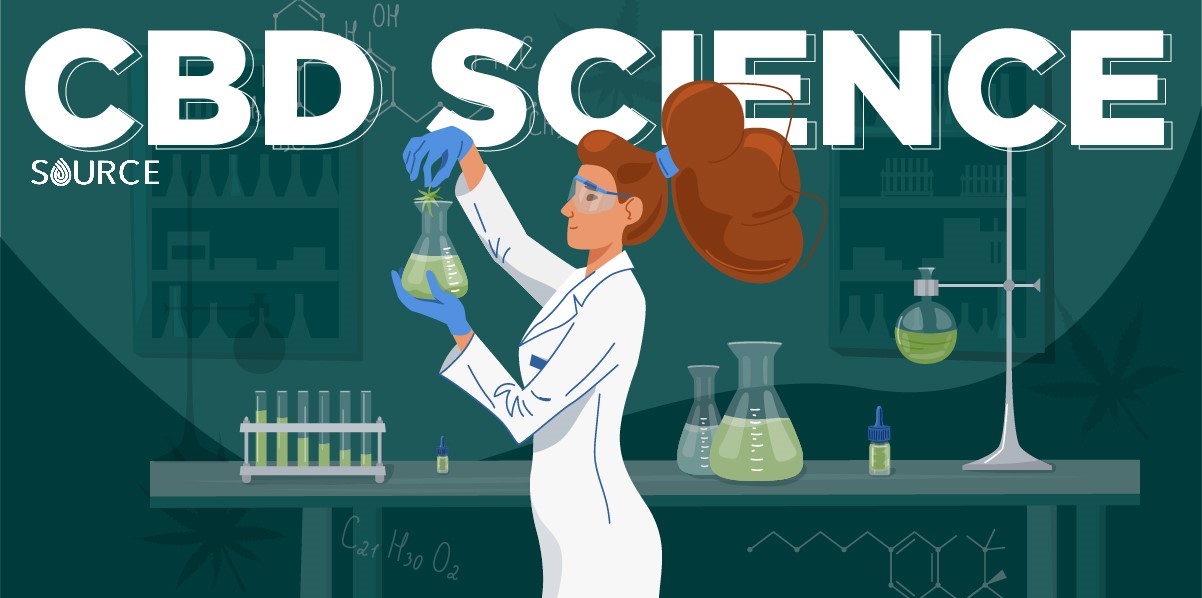CBD Oil for Health
CBD Science: What We Know So Far
Thanks to its rapidly growing popularity and increased understanding in recent years, CBD has generated significant interest among scientists. CBD science may yet be in its infancy, but what we know so far is astounding.
So, what is CBD, how does it work, and where do we stand as far as the research and science behind it?
What is CBD?
CBD, short for cannabidiol, is a naturally occurring chemical compound called a cannabinoid that comes from the cannabis plant.
Tetrahydrocannabinol (THC) is another cannabinoid you’ve probably heard of. THC is the one that makes people feel “high.” CBD, unlike THC, is non-intoxicating, so it doesn’t have that same effect.
There are two different types of cannabidiol out there:
- Hemp-based CBD oil
- Marijuana-based CBD oil
Both contain CBD, and both come from the cannabis plant, but hemp and marijuana are different varieties of the plant. The main source of most CBD oil on the market today is the hemp plant.
CBD oil from hemp naturally contains a higher CBD to THC ratio than the marijuana plant. The THC count is usually very low (>.3%).
How CBD Works
CBD works by interacting with something called the Endocannabinoid System (ES). This system is found throughout your entire body, and its job is to bring about homeostasis, or balance, when things are out of whack.
The ES is made up of receptors, enzymes, and endocannabinoids. When something is not working as it should in the body, signals are sent through the ES. When you take CBD, it works within this system.
One of the main ways CBD works is by mirroring the effects of the endogenous cannabinoid compounds our bodies naturally produce. This mirroring helps to modulate and regulate the physiological process within the body.
Scientists are still learning about the ES role in your overall health, but so far they’ve determined that it plays an important role in a wide range of functions, including:
- sleep
- mood
- appetite
- pain sensation
- memory
- reproduction and fertility
CBD Science
Although fairly new in the grand scheme of things, there is already a lot (and we mean a lot) of CBD science out there. And, there’s a lot more being conducted at this very moment, all around the world.
So, what do we know so far?
Well, as we mentioned, a lot. Here’s just a smattering of the existing CBD science:
- At high concentrations, CBD directly activates the 5-HT1A (hydroxytryptamine) serotonin receptor. This is where its anti-anxiety effects come from. This protein receptor is involved in a wide range of biological and neurological processes.
- According to researchers at Stony Brook University, CBD functions as an anandamide reuptake and breakdown inhibitor, thereby raising endocannabinoid levels in the brain’s synapses. This may explain, in part, its reported efficacy toward epilepsy and other neurological disorders.
- Like THC, CBD modulates receptors on the surface of a cell’s nucleus, which can then balance gene expression and mitochondrial activity.
- CBD activates PPARs that live on the surface of a cell’s nucleus. PPAR-gamma activation degrades amyloid-beta plaque, a key molecule linked to the development of Alzheimer’s disease. PPARs also regulate various genes involved in energy homeostasis, lipid uptake, insulin sensitivity, and other metabolic functions.
- It also functions as an allosteric receptor modulator, which means that it can either enhance or inhibit how a receptor transmits a signal by changing the shape of the receptor.
- CBD functions as an antagonist that blocks, or deactivates, a G protein-coupled receptor known as GPR55. GPR55 promotes osteoclast cell function, which helps encourage bone reabsorption. This is important because scientists can link overactive GPR55 receptor signaling with osteoporosis.
Want to get even more in depth in the CBD science and how it works in the body? Project CBD has some incredible content and dives right in. Take a look.

